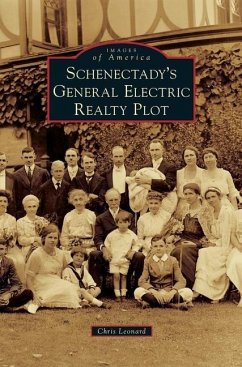Schenectady's General Electric Realty Plot was formed in 1899 when the General Electric (GE) Company purchased 70 acres of land from Union College to provide unique housing opportunities for its executives and scientists and to attract brilliant minds from around the world to work for GE. The original 178 homes were designed by leading architects from as far away as Boston, New York City, and Chicago. The neighborhood, colloquially known as "The Plot," would also become home to political and religious leaders, businesspeople, and entertainment elite. Inhabited by luminaries such as Charles Proteus Steinmetz, 1932 Nobel Prize winner Irving Langmuir, Ernst Alexanderson, and William D. Coolidge, the GE Realty Plot was also home to many important historic firsts, including the first demonstration of radar in the United States and the first reception of a television signal in a house.
Hinweis: Dieser Artikel kann nur an eine deutsche Lieferadresse ausgeliefert werden.
Hinweis: Dieser Artikel kann nur an eine deutsche Lieferadresse ausgeliefert werden.








